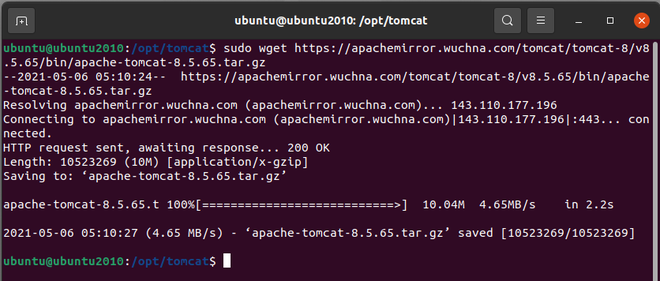

This installation and configuration guide is applicable to Tomcat 7 and 8, and possibly the earlier versions. Take note that Tomcat 8 requires JDK 1.7.
#Apache tomcat 8mac upgrade#
If your JDK is below 1.7, upgrade it (See JDK How-To).

#Apache tomcat 8mac windows#
Windows Server 2012 users: On your keyboard, press the Windows key + R, type services.msc and press the Enter key on your keyboard. You can check your JDK version via command “javac -version”. In cases where the ESET PROTECT Web Console is not running, verify if the Apache Tomcat service is running: Windows 7/10/Server 2016/Server 2019 users: Click Start Run, type services.msc and click OK. IntroductionĪ web application (or webapp), unlike standalone application, runs over the Internet. HTTP Server: E.g., Apache HTTP Server, Apache Tomcat Server, Microsoft Internet Information Server (IIS), nginx, Google Web Server (GWS), and others.Įxamples of webapps are google, amazon, ebay, facebook and twitter.Ī webapp is typically a 3-tier (or multi-tier) client-server database application run over the Internet as illustrated in the diagram below.HTTP Client (or Web Browser): E.g., Internet Explorer (MSIE), FireFox, Chrome, Safari, and others.Database: E.g., Open-source MySQL, Apache Derby, mSQL, SQLite, PostgreSQL, OpenOffice’s Base Commercial Oracle, IBM DB2, SAP SyBase, MS SQL Server, MS Access and others.Client-Side Programs: could be written in HTML Form, JavaScript, VBScript, Flash, and others.Server-Side Programs: could be written in Java Servlet/JSP, ASP, PHP, Perl, Python, CGI, and others.A user, via a web browser (HTTP client), issues a URL request to an HTTP server to start a webapp.The HTTP server returns an HTML form (client-side program), which is loaded into the client’s browser.The user fills up the query criteria inside the form and submits the form.The client-side program sends the query parameters to a server-side program.

The server-side program receives the query parameters, queries the database based on these parameters, and returns the query result to the client-side program.The client-side program displays the query result on the browser.The process repeats for the next request.HTTP is an application layer protocol runs over TCP/IP.The IP provides support for routing and addressing (via an unique IP address for machines on the Internet) while TCP supports multiplexing via 64K ports from port number 0 to 65535. The default port number assigned to HTTP is TCP port 80. HTTP is an asynchronous request-response application-layer protocol.A client sends a request message to the server. The server then returns a response message to the client.


 0 kommentar(er)
0 kommentar(er)
